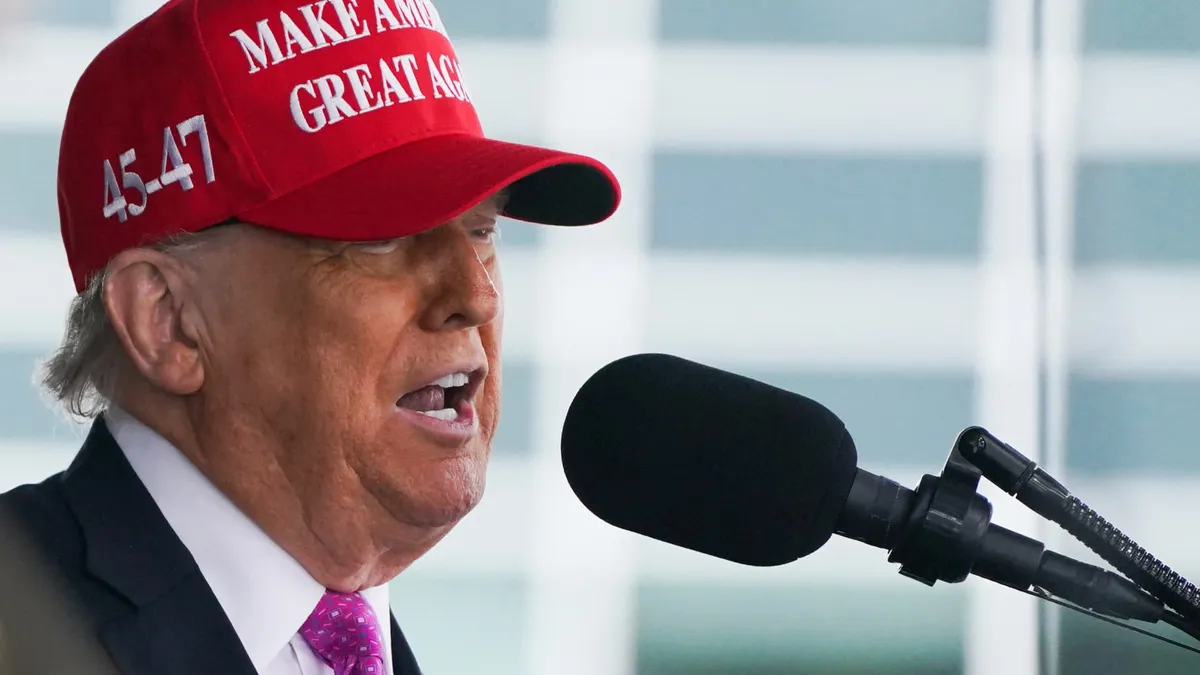
U.S. President Donald Trump has stirred controversy with his recent threat to impose 50% tariffs on the European Union. If he follows through on this action, it would mean significantly higher duties on an American ally compared to the 30% tariffs currently levied on China. However, on Sunday, Trump announced a delay for these tariffs, pushing the deadline from June 1 to July 9, after a discussion with European Commission President Ursula von der Leyen.
The initial announcement of the tariffs raised eyebrows among analysts, as many were skeptical about the seriousness of Trump's statements. Notably, Trump referred to the tariffs as a "recommendation," indicating that it was more of a proposal than a definitive policy directive. This is not the first time Trump has backtracked on import duties; he has previously paused reciprocal tariffs and eased trade barriers with China, albeit temporarily.
Despite the looming threat of tariffs, major U.S. and European stock indexes did not react sharply, suggesting that investors are growing more cautious about tariff-related news. Following Trump's initial announcement on April 2, the markets experienced a minor sell-off, yet the recent performance of the S&P 500, Dow Jones Industrial Average, and Nasdaq Composite reflected a more tempered response, with losses of more than 2% during the week as Treasury yields rose. This sell-off was exacerbated by Trump's tax bill, which is projected to add approximately $2.3 trillion to the federal deficit.
On Sunday, Trump reiterated his position on the 50% tariffs on the EU but postponed their implementation. Trade experts warned that such tariffs could backfire, potentially increasing manufacturing costs in the U.S. Notably, the White House did not view Trump's post as a formal policy statement, according to CNBC's Eamon Javers.
In response to the tariff threats, U.S. stocks experienced a slight decline. On Friday, the S&P 500 dipped 0.67%, the Dow Jones Industrial Average fell by 0.61%, and the Nasdaq Composite slid 1%. These market movements were relatively modest compared to the over 4% drop seen on April 4, right after Trump announced reciprocal tariffs. Similarly, Europe's Stoxx 600 index fell 0.93%, a milder reaction than following Trump’s previous announcements.
In a recent social media post, Trump indicated that Apple would face a tariff of 25% or more for iPhones manufactured outside the U.S. Wall Street analysts predict that shifting iPhone production back to the U.S. could increase the cost of the smartphone by at least 25%. However, many analysts believe it might be more feasible for Apple to absorb the costs rather than relocate production.
In other news, Trump announced the approval of the merger between U.S. Steel and Nippon Steel, claiming it would create at least 70,000 jobs and contribute $14 billion to the U.S. economy. This deal comes after former President Joe Biden blocked Nippon Steel's acquisition of U.S. Steel in January due to national security concerns. Following this announcement, shares of U.S. Steel surged by 21.2%.
This week, attention turns to Nvidia as the company announces its first-quarter earnings. The outcome of this announcement, along with Trump's unpredictable comments, will likely influence investor sentiment in the coming days. Additionally, investors are advised to monitor the U.S. personal consumption expenditure index for April to gauge how tariffs are impacting consumer prices.
In response to the challenges posed by Trump's tariff measures, several technology firms, including Salesforce, are leveraging artificial intelligence to manage their global supply chains more effectively. Salesforce has developed a new AI agent capable of processing changes across 20,000 product categories in the U.S. customs system, enabling businesses to adapt swiftly to tariff changes. As uncertainty persists around U.S. tariff policies, experts believe that this could be a pivotal moment for AI to demonstrate its value in navigating complex market dynamics.